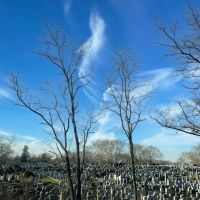Jackie Robinson Parkway Introduce
New York City is a tapestry of vibrant neighborhoods, interconnected by an intricate web of roads and transit. For those navigating the urban landscape of Brooklyn and Queens, the Jackie Robinson Parkway stands as a crucial artery. More than just a thoroughfare, this parkway is steeped in history and offers a unique perspective on the borough's green spaces and historical landmarks. From its winding curves designed to respect sacred grounds to its commemorative name honoring a true American icon, the Jackie Robinson Parkway is an integral part of the New York experience for local drivers.
Originally known as the Interboro Parkway, this approximately 4.95-mile controlled-access roadway opened in 1935. It was envisioned as a scenic route, a leisurely drive through the burgeoning boroughs. However, its path, carefully carved to minimize disturbance to the numerous cemeteries it traverses, resulted in distinctive sharp curves that remain a defining characteristic today. In 1997, on the 50th anniversary of Jackie Robinson breaking Major League Baseball's color barrier, the New York State officially renamed the road in his honor. This dedication not only pays tribute to a pioneering figure in American history but also reminds us of the rich cultural heritage embedded within the city's infrastructure.
For New Yorkers, the Jackie Robinson Parkway is more than just asphalt and concrete; it's a vital connection, often a part of daily commutes and weekend adventures. It serves as a direct link between the eastern parts of Brooklyn and central Queens, providing access to major highways and local thoroughfares. Understanding its nuances, from its historic design to its modern-day usage, can enhance any local's navigation and appreciation of our incredible city.
The Jackie Robinson Parkway elegantly weaves its way through the urban fabric of Brooklyn and Queens, serving as a critical connector for commuters and those exploring the green spaces of the boroughs. Its western terminus is located at Jamaica Avenue in the East New York neighborhood of Brooklyn, where it meets Pennsylvania and Bushwick avenues. From there, it extends eastward, culminating at the Kew Gardens Interchange in Kew Gardens, Queens. Here, it seamlessly merges with the Grand Central Parkway and Interstate 678 (the Van Wyck Expressway), providing further connectivity to other major routes.
This strategic placement makes the Jackie Robinson Parkway highly accessible from various points in both boroughs. Drivers can easily connect from neighborhoods like East New York, Cypress Hills, Glendale, Forest Hills, and Kew Gardens. While it is a parkway, it is important to note that commercial vehicles are generally restricted from using it, ensuring a smoother flow of passenger traffic. This is a common characteristic of many New York City parkways, designed to offer a more relaxed driving experience compared to the bustling expressways.
One of the most notable aspects of the parkway's route is its passage through and alongside several historic cemeteries, including Mount Judah Cemetery, Cypress Hills Cemetery (where Jackie Robinson himself is buried), and Mount Carmel Cemetery. This unique alignment is why the parkway features many of its signature sharp curves, as its original design prioritized minimizing the disturbance of gravesites. This historical design choice, while contributing to a lower recommended speed limit in certain sections (around 25 MPH in some curved areas), also offers a distinct driving experience unique to this part of New York City.
Beyond vehicular access, the parkway runs alongside significant green spaces like Highland Park and Forest Park, which offer opportunities for pedestrian and cyclist access to their respective amenities. While the parkway itself is not designed for pedestrian or bicycle traffic, its proximity to these parks means that local users can easily reach these recreational areas via adjacent streets and pathways. Efforts to improve pedestrian and cyclist access to areas like the Ridgewood Reservoir at Highland Park, which borders the parkway, are ongoing, reflecting a commitment to enhancing connectivity for all modes of transport in the surrounding communities.
While the Jackie Robinson Parkway primarily serves as a transportation corridor, its role extends to facilitating access to important community resources and points of interest. It's not a typical "park" in the sense of having dedicated services like a visitor center or public restrooms directly on the roadway. However, it provides access to the following:
- Direct Roadway Connection: The parkway efficiently links Brooklyn and Queens, significantly reducing travel time between these two bustling boroughs.
- Access to Major Interchanges: It connects with the Grand Central Parkway and Van Wyck Expressway at its eastern end, offering seamless transitions to other key routes leading to Long Island, airports, and other parts of New York City.
- Proximity to Green Spaces: The parkway runs alongside and provides direct access to renowned parks such as Highland Park and Forest Park. These parks offer a wide array of recreational activities and natural beauty for local residents.
- Historic and Cultural Significance: As a memorial to Jackie Robinson, the parkway itself serves as a continuous reminder of his legacy, with new signage featuring his image. It also provides access to Cypress Hills Cemetery, his final resting place.
- Traffic Information: Real-time traffic information and webcams are often available for segments of the parkway through various city and state transportation websites and navigation apps, helping drivers plan their routes.
The Jackie Robinson Parkway boasts several distinctive features and highlights that make it a notable part of the New York City landscape:
- Historic Naming: Renamed in 1997, the parkway honors Jackie Robinson, the first African American to play in Major League Baseball. New signage along the parkway features his iconic image, serving as a powerful tribute to his enduring legacy.
- Unique Design Through Cemeteries: Unlike many modern roadways, the Jackie Robinson Parkway was designed in the 1930s with significant consideration for the numerous historic cemeteries it passes through. This resulted in its famously winding curves, which were engineered to minimize the disturbance of gravesites. This historical context provides a unique driving experience and a tangible connection to the city's past.
- Connectivity to Major Parks: The parkway provides direct access to two of the city's significant green oases: Highland Park in Brooklyn and Forest Park in Queens.
- Highland Park: This park, bordering the western section of the parkway, is home to the Ridgewood Reservoir, a decommissioned 19th-century reservoir that has naturally transformed into a lush freshwater wetland. It's a haven for birdwatchers and nature enthusiasts, offering tranquil walking paths and stunning natural beauty right within the city.
- Forest Park: As the parkway continues eastward into Queens, it enters Forest Park, one of the largest parks in the borough. Forest Park offers extensive woodlands, recreational facilities, and scenic drives, providing a much-needed escape from urban density.
- Scenic Views: Despite its urban setting, sections of the Jackie Robinson Parkway offer pleasant, tree-lined views, especially as it winds through Highland and Forest Parks. The naturalization of the Ridgewood Reservoir provides particularly picturesque vistas.
- Connection to Important Neighborhoods: The parkway connects vibrant and diverse neighborhoods such as East New York, Cypress Hills, Glendale, Forest Hills, and Kew Gardens, making it a crucial link for residents and businesses across these areas.
As a public roadway and a parkway maintained by the city and state departments of transportation, the Jackie Robinson Parkway does not offer traditional "promotions" or "special offers" in the commercial sense. Its primary function is to facilitate transportation and provide access to the surrounding areas.
However, the value and "offers" it provides to local users come in other forms:
- Free Access: As a public parkway, there are no tolls or fees to use the Jackie Robinson Parkway, making it a cost-effective route for travel between Brooklyn and Queens.
- Enhanced Connectivity: The seamless connection it offers to other major highways like the Grand Central Parkway and Van Wyck Expressway effectively "promotes" smoother and faster travel to destinations beyond its immediate length, including Long Island and John F. Kennedy International Airport (JFK).
- Gateway to Free Recreational Spaces: The parkway provides direct access to free public parks such as Highland Park and Forest Park. These parks, with their vast green spaces, walking trails, and recreational facilities, offer invaluable opportunities for outdoor activities, relaxation, and connecting with nature—all at no cost.
- Historical and Educational Value: The parkway itself, through its name and new signage, offers a continuous "promotion" of Jackie Robinson's legacy and the rich history of New York City. This serves as an ongoing educational experience for anyone traveling its length.
- Community Engagement Opportunities: While not directly tied to the parkway itself, the nearby parks accessible via the Jackie Robinson Parkway often host free community events, concerts, and volunteer opportunities. Users of the parkway can take advantage of these local happenings, fostering a sense of community and providing free entertainment and engagement. Keep an eye on the NYC Parks Department website for calendars of events in Highland Park and Forest Park.
These "offers" are inherent to the parkway's existence as public infrastructure, providing immense value to New Yorkers by enhancing mobility, offering access to green spaces, and preserving historical memory.
The Jackie Robinson Parkway is a public thoroughfare maintained by government agencies. Therefore, it does not have a direct "contact number" in the way a private business would. For information related to the parkway, such as traffic conditions, maintenance, or general inquiries, you would typically contact the relevant city or state departments.
- Address (General Area): Jackie Robinson Pkwy, Brooklyn, NY 11208, USA (This address represents a central point along the parkway, but it spans a significant distance across two boroughs).
- For Traffic Information and Road Conditions: You can usually find real-time traffic updates through:
- New York State Department of Transportation (NYSDOT) website.
- New York City Department of Transportation (NYC DOT) website.
- Major traffic apps and GPS services.
- For General Inquiries Regarding City Parkways/Infrastructure:
- You can reach out to the NYC 311 service, which is a comprehensive resource for non-emergency New York City government services and information. Simply dial 311 from within NYC or visit their website. They can direct your inquiry to the appropriate department, whether it's NYC DOT for maintenance or general information, or NYC Parks if your query pertains to adjacent parkland.
- For Information on Jackie Robinson's Legacy:
- The Jackie Robinson Foundation is an excellent resource for learning more about his life and contributions.
Since the parkway is a public infrastructure, there isn't a single phone number dedicated solely to it. Utilizing NYC 311 or the respective transportation department websites will be the most effective way to obtain information or report issues related to the Jackie Robinson Parkway.
For New Yorkers, the Jackie Robinson Parkway is far more than just a road; it’s a crucial thread in the fabric of daily life, offering a unique blend of practicality, history, and access to essential green spaces. Its suitability for locals stems from several key aspects that resonate deeply with the needs and desires of those living in our bustling metropolis.
Firstly, its strategic location makes it an indispensable connector. For residents of Brooklyn and Queens, navigating between these two boroughs can be a challenge, but the Jackie Robinson Parkway offers a direct, efficient route. Whether it's for daily commutes, visiting family and friends, or accessing various commercial districts, the parkway streamlines travel, saving valuable time and reducing the stress often associated with city driving. Its seamless integration with major arteries like the Grand Central Parkway and the Van Wyck Expressway further enhances its utility, providing effortless transitions to destinations further afield, including JFK Airport and various points on Long Island. This connectivity is paramount for New Yorkers who rely on convenient transportation options.
Beyond its functional role, the Jackie Robinson Parkway holds significant historical and cultural value. Its name proudly honors Jackie Robinson, a monumental figure in American history whose courage and contributions transcended sports. Driving along this parkway serves as a constant, subtle reminder of his legacy, imbuing a daily commute with a sense of historical significance. The thoughtful design, with its characteristic curves that respect the sacred ground of the cemeteries it traverses, speaks to an earlier era of urban planning, offering a unique, almost contemplative driving experience that sets it apart from more utilitarian highways. For locals, this historical depth adds another layer to their connection with the city’s infrastructure.
Perhaps one of the most compelling reasons for the parkway's appeal to locals is its direct access to vital green spaces. New York City residents cherish their parks, and the Jackie Robinson Parkway is a gateway to two of Queens and Brooklyn’s most significant natural retreats: Highland Park and Forest Park. Highland Park, with its remarkable Ridgewood Reservoir, offers a tranquil oasis for birdwatching, walking, and simply escaping the urban hustle. Forest Park, a sprawling woodland, provides opportunities for recreation, leisurely drives, and a deeper connection with nature. For busy New Yorkers, these accessible green havens, facilitated by the parkway, are invaluable for mental and physical well-being. The ease with which one can transition from the concrete jungle to a natural setting makes the parkway an essential component of local recreational life.
In essence, the Jackie Robinson Parkway is perfectly suited for locals because it embodies the spirit of New York City: a dynamic blend of efficiency, history, and access to unexpected pockets of tranquility. It supports daily routines, celebrates a heroic past, and opens doors to vital recreational opportunities, making it an indispensable part of the New Yorker’s urban experience.
Jackie Robinson Parkway Photos


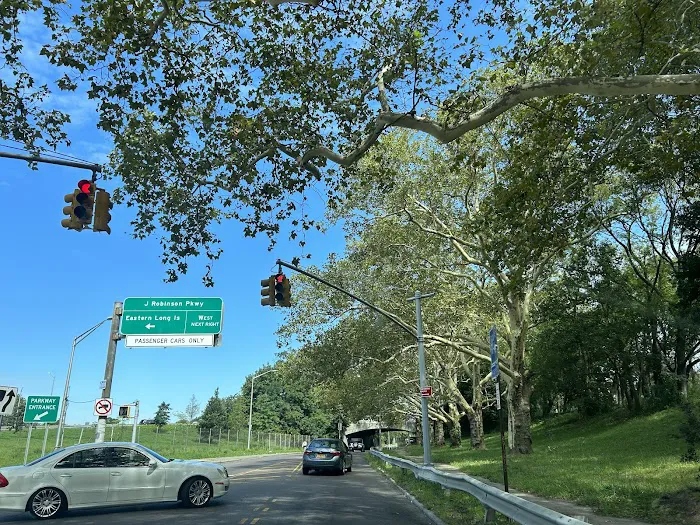
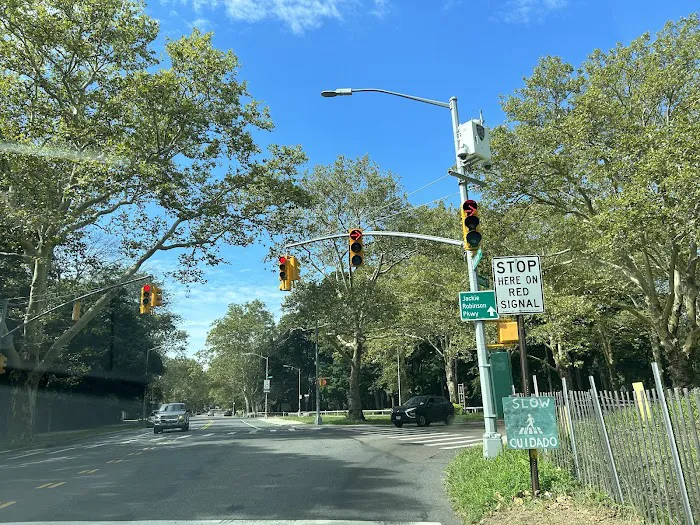
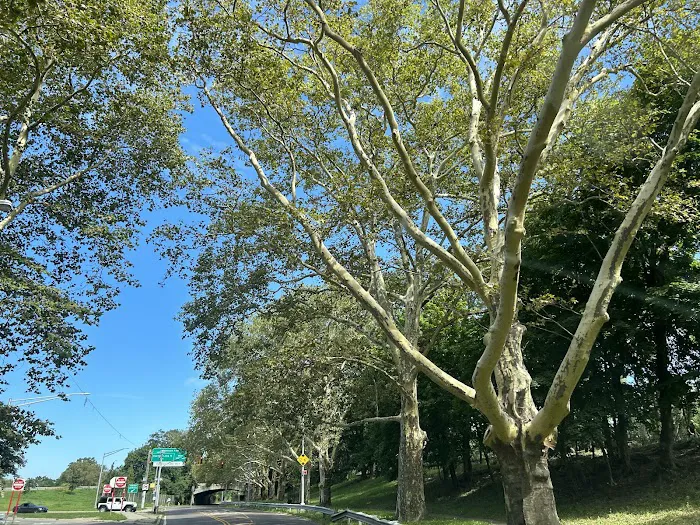
Jackie Robinson Parkway Location
Jackie Robinson Parkway
Jackie Robinson Pkwy, Brooklyn, NY 11208, USA
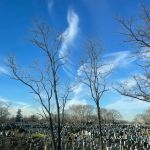 Jackie Robinson Parkway
Jackie Robinson ParkwayJackie Robinson Pkwy
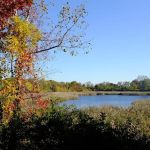 Ridgewood Reservoir
Ridgewood ReservoirJackie Robinson Pkwy
 Highland Park
Highland ParkJackie Robinson Pkwy
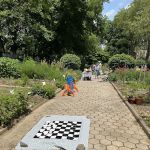 Highland Park Community Garden
Highland Park Community Garden398 Jamaica Ave
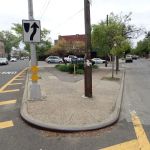 Sam Leggio Triangle
Sam Leggio TriangleEtna St. &
 Latisha Luxury Place
Latisha Luxury Place48 Essex St
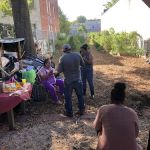 Chestnut Street Community Garden
Chestnut Street Community Garden9 Chestnut St
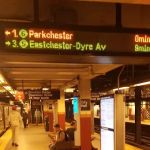 Essex Street Community Garden
Essex Street Community Garden3030 Fulton St
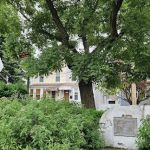 Glendale World War II Memorial
Glendale World War II MemorialGlendale
 Riviera Motor Inn
Riviera Motor Inn2969 Atlantic Ave
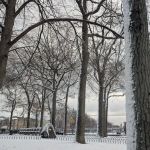 Drumm Triangle
Drumm TriangleCooper Avenue
 George Walker Jr. Park
George Walker Jr. ParkVermont St &
 Bkway Hotel Brooklyn
Bkway Hotel Brooklyn3192 Atlantic Ave
Jackie Robinson Parkway Reviews
More Scenic Spot
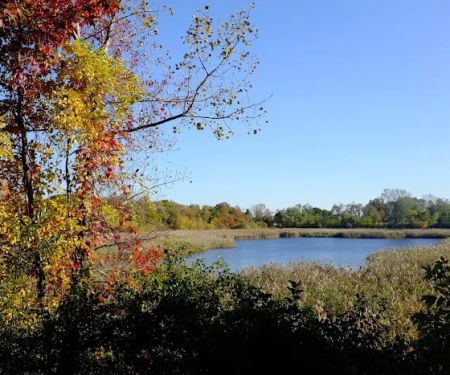 Ridgewood Reservoir4.0 (194 reviews)
Ridgewood Reservoir4.0 (194 reviews)Jackie Robinson Pkwy, Brooklyn, NY 11208, USA
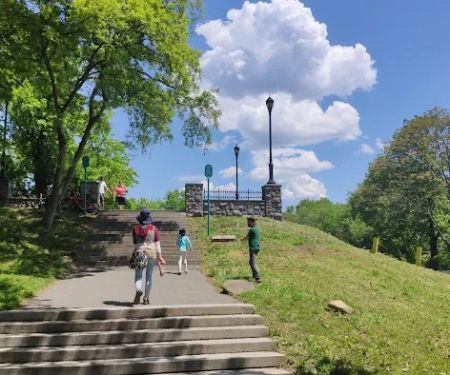 Highland Park4.0 (4466 reviews)
Highland Park4.0 (4466 reviews)Jackie Robinson Pkwy, Brooklyn, NY 11208, USA
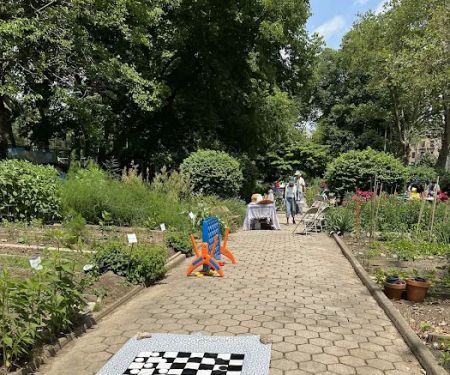 Highland Park Community Garden4.0 (65 reviews)
Highland Park Community Garden4.0 (65 reviews)398 Jamaica Ave, Brooklyn, NY 11207, USA
 Sam Leggio Triangle5.0 (1 reviews)
Sam Leggio Triangle5.0 (1 reviews)Etna St. &, Highland Pl, Brooklyn, NY 11208, USA
 Latisha Luxury Place4.0 (279 reviews)
Latisha Luxury Place4.0 (279 reviews)48 Essex St, Brooklyn, NY 11208, USA
 Chestnut Street Community Garden4.0 (8 reviews)
Chestnut Street Community Garden4.0 (8 reviews)9 Chestnut St, Brooklyn, NY 11208, USA
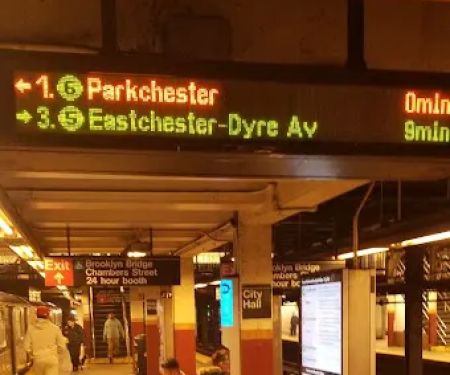 Essex Street Community Garden4.0 (9 reviews)
Essex Street Community Garden4.0 (9 reviews)3030 Fulton St, Brooklyn, NY 11208, USA
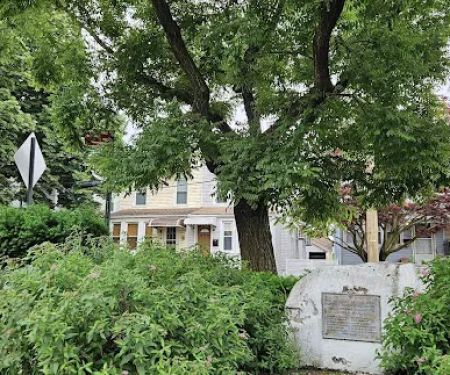 Glendale World War II Memorial0.0 (0 reviews)
Glendale World War II Memorial0.0 (0 reviews)Glendale, Queens, NY 11385, USA
 Riviera Motor Inn3.0 (610 reviews)
Riviera Motor Inn3.0 (610 reviews)2969 Atlantic Ave, Brooklyn, NY 11208, USA
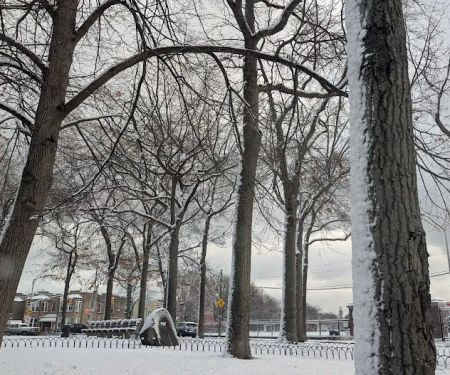 Drumm Triangle4.0 (61 reviews)
Drumm Triangle4.0 (61 reviews)Cooper Avenue, 65th Place, Cypress Hills St, Ridgewood, NY 11385, USA
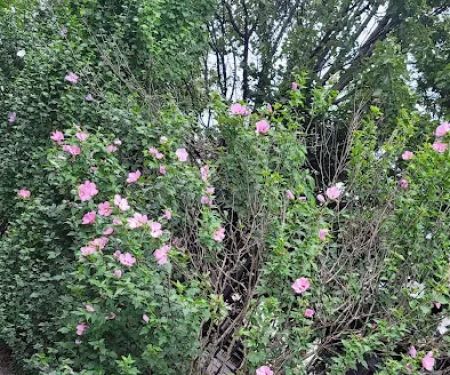 George Walker Jr. Park4.0 (13 reviews)
George Walker Jr. Park4.0 (13 reviews)Vermont St &, Jamaica Ave, Brooklyn, NY 11207, USA
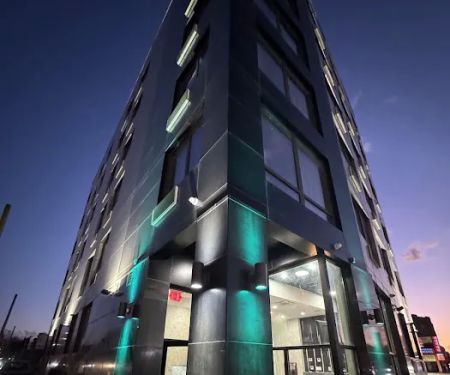 Bkway Hotel Brooklyn4.0 (22 reviews)
Bkway Hotel Brooklyn4.0 (22 reviews)3192 Atlantic Ave, Brooklyn, NY 11208, USA
Categories
Popular Camping Sites
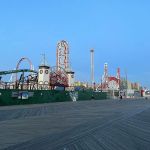 Coney Island Boardwalk Garden4.0 (75 reviews)
Coney Island Boardwalk Garden4.0 (75 reviews) The William Hotel Midtown, Sonder4.0 (555 reviews)
The William Hotel Midtown, Sonder4.0 (555 reviews)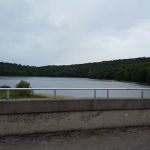 Shepard Lake Recreation Area0.0 (0 reviews)
Shepard Lake Recreation Area0.0 (0 reviews) Stairway To Heaven4.0 (185 reviews)
Stairway To Heaven4.0 (185 reviews)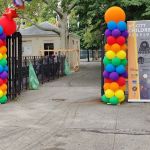 Howard Bennett Playground4.0 (152 reviews)
Howard Bennett Playground4.0 (152 reviews) Isle of Meadows4.0 (10 reviews)
Isle of Meadows4.0 (10 reviews)Trending Camping Blog Posts
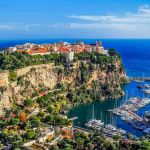 Top Group Travel Destinations in Europe: Best Places for Group Vacations
Top Group Travel Destinations in Europe: Best Places for Group Vacations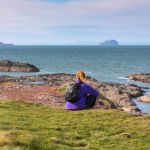 How to Get Involved in Travel Clans for Social Travel: Explore Group Travel Opportunities
How to Get Involved in Travel Clans for Social Travel: Explore Group Travel Opportunities Best Travel Clans for Sustainable Travel
Best Travel Clans for Sustainable Travel Best Group Vacation Destinations for Friends: Ultimate Travel Ideas
Best Group Vacation Destinations for Friends: Ultimate Travel Ideas Travel Clans for Solo Travelers Looking for Company: Join Unique Travel Communities
Travel Clans for Solo Travelers Looking for Company: Join Unique Travel Communities Best Travel Clans for Women Traveling Together
Best Travel Clans for Women Traveling Together 
